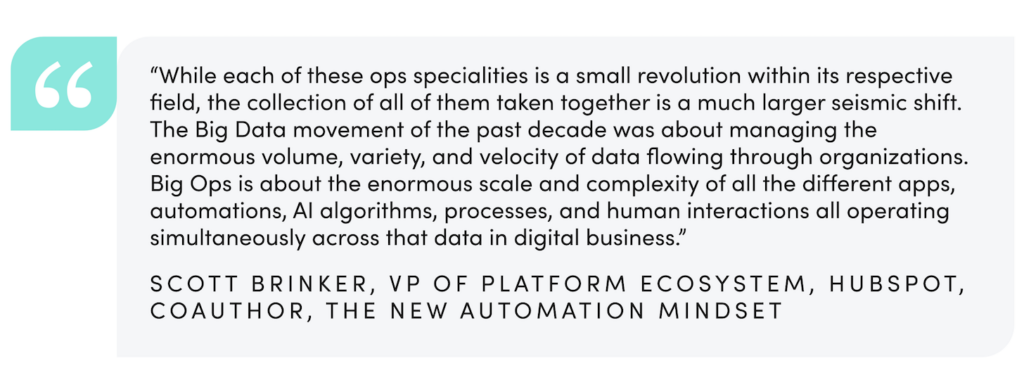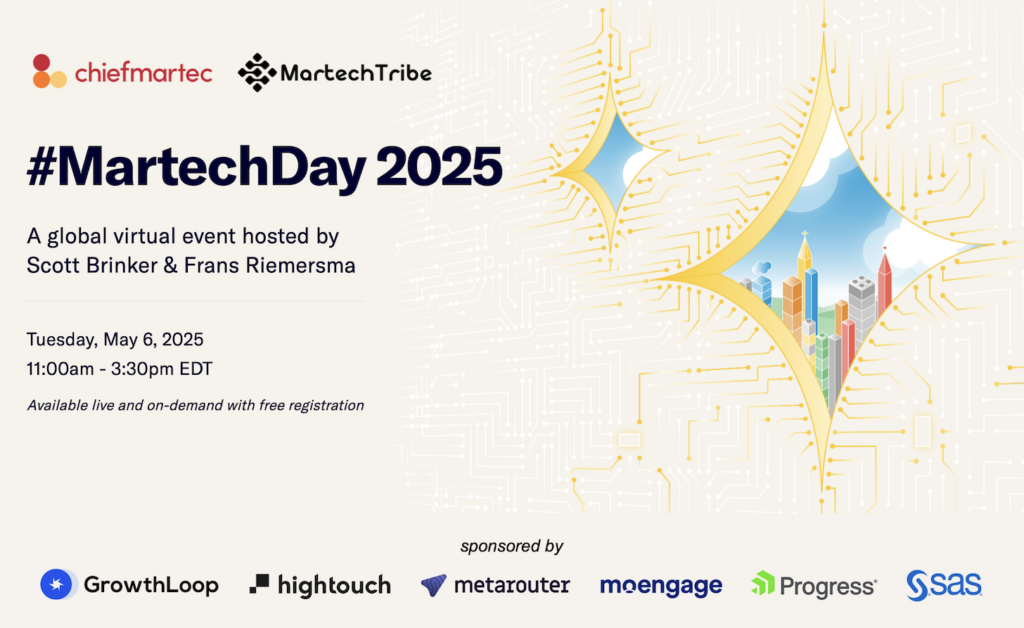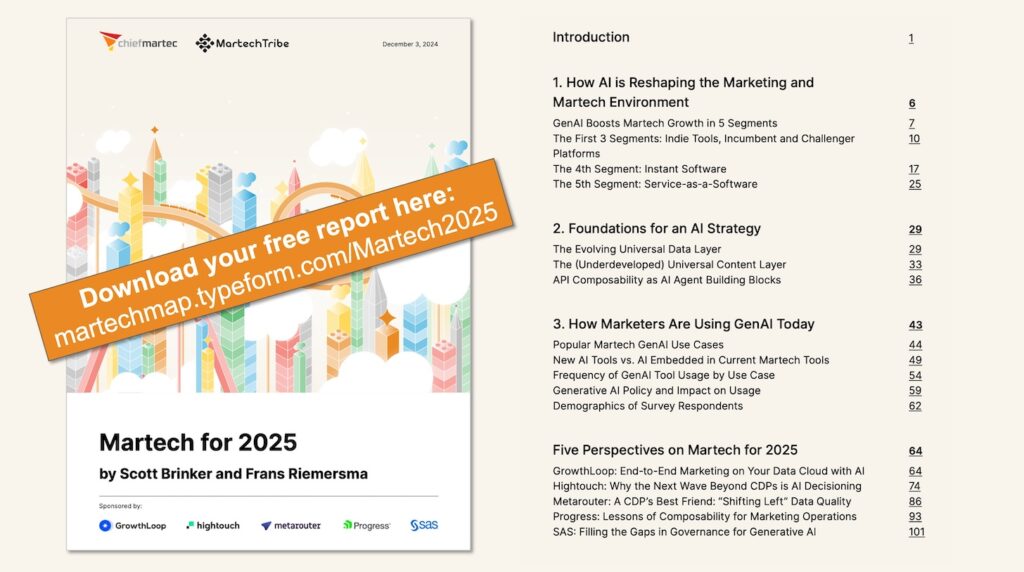
“Everyone within Publicis will become a data analyst, an engineer, an intelligence partner, with all the information they need at their fingertips to supercharge client growth.”
Publicis Groupe made that bold statement last week in a press release and presentation celebrating their performance from last year “after shifting from a holding company to a platform” and charting their course for their future in the age of AI.
Now, if you’ve raised a skeptical eyebrow to that claim, you’re in good company with most of the people I shared that with on LinkedIn and the artist-formerly-known-as-Twitter. But, hey, if the world’s third largest agency holding platform company can’t paint an audacious picture, you’d worry about their core competency.
But here’s the thing: directionally, I think they’re right.
Empirical evidence supporting that vision came with the release of Workato’s 2024 Work Automation & AI Index report earlier this week. Workato is a leading enterprise automation company that provides a low-code/no-code (LCNC) platform for automating processes and workflows across your tech stack. (Disclosure: I am an advisor to them and a co-author of their CEO’s new book, The New Automation Mindset.)
Using anonymized data sampled over 36 months from 1,055 customers on their platform, they captured the ground truth of what companies are automating — looking at over 82,000 automations — but arguably more remarkably, who is building those automations.
The big reveal in my opinion: 44% of all automated processes are built outside of IT.
Business ops teams — such as marketing ops, sales ops, revops — build 27% of all these automations. Non-IT project managers, product managers, app adminstrators (looking at you, CRM admins), build another 10%. And then another 7% of “other” builders, which I’ll guess as intrapreneurial power users. (I have a couple of them on my partnerships team at HubSpot, where we also use Workato, and it’s amazing what they can do.)
It’s also notable that these non-IT builders — who are experts in their domain, but at least organizationally are not experts in IT — aren’t just automating simple processes in their function. They’re tackling complex automations too.
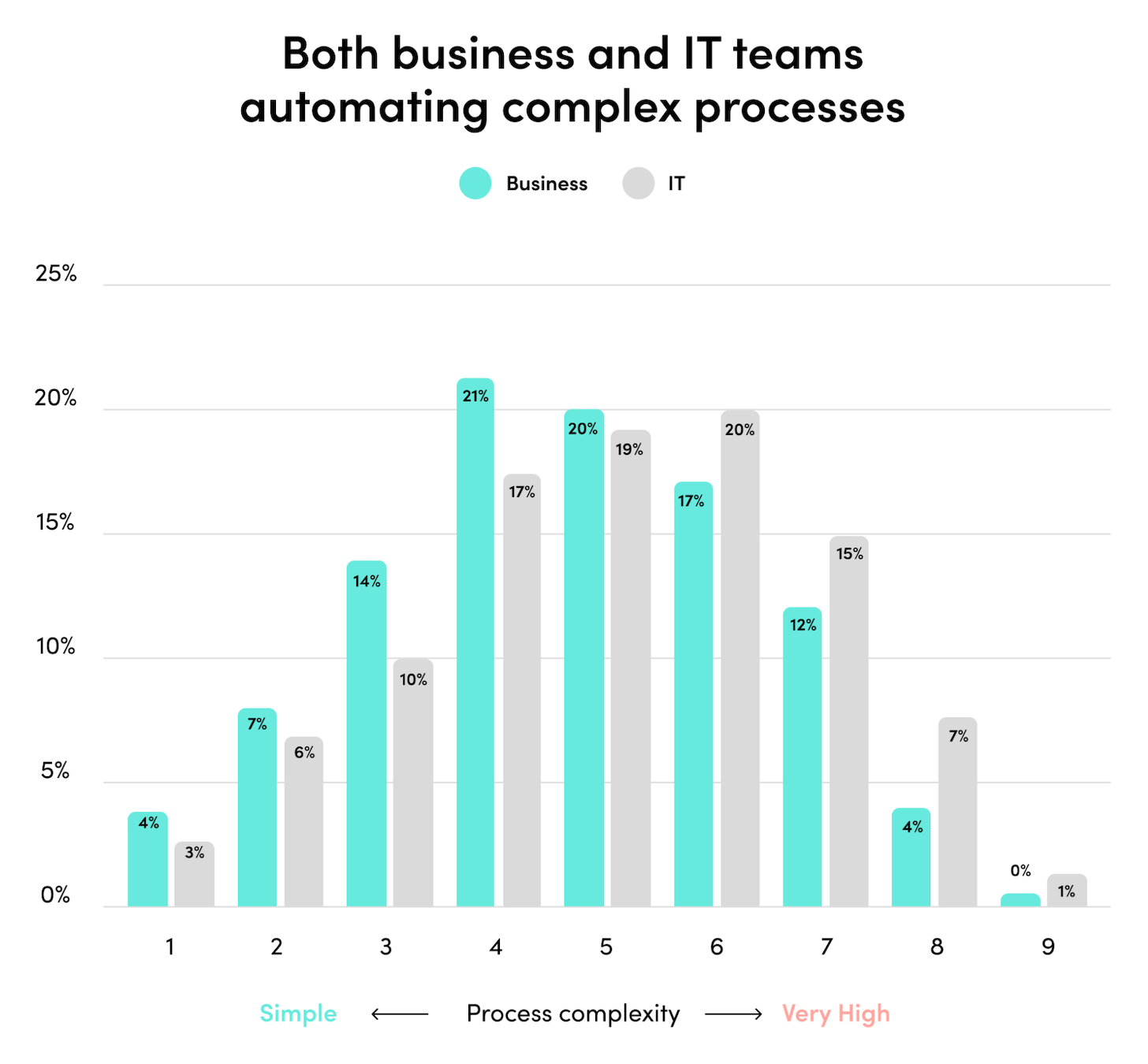
“Scores of 1-3 are simple, point-to-point integrations with 1-4 steps. They contain no logic, and interconnect simple SaaS applications. Complex processes (4-6) involve conditional rules, logic, looping, data transformations, and cross-reference data. Sometimes they involve batch processing. Highly complex processes involve a combination of SaaS, on-premise, ERP, and enterprise applications. They often contain 30+ steps, with conditional rules, advanced transformation, humans in the loop, and more.”
Now, I know there are a few cynics skeptics out there who think non-IT people using LCNC tools is a recipe for disaster. We could have a vigorous debate over the relative value of domain expertise vs. IT expertise when it comes to implementing digital operations within a business function. But instead of rhetoric, let’s look at data:

If business teams implementing their own automations was going to create a train wreck, you’d expect to see that show up in the first year, when those business builders are least experienced. Or at least the first two or three years, right? Things would go pear-shaped, and the CIO would drop the hammer, “Look at the mess these amateurs created! We’re taking over.”
But that’s not what the data shows. Quite the opposite. On average, after having 31% of automations built by the business in Year 1, the organization leans into that model even further and has 41% built by the business in Year 2. By Year 3 that number is up to 48%.
Keep in mind, this is not an IT versus business situation, with the two different sides using competing tools. They’re all unified on one common platform — a quintessential example of a workflow-layer aggregation platform — that is almost always owned by IT. Empowering these business teams is part of IT’s strategy.
As Workato notes, “IT is evolving into a player-coach role: 56% of automations are still built by IT personas, but IT is also being tasked with governance and guidance for the 44% handled by business teams.”
Can we have both empowered domain expertise and good IT governance harmonized? The evidence here suggests yes.
The really exciting thing about this? This multi-year data from Workato only includes the effects of generative AI at the tail of the time period analyzed. Last year, they released a natural language copilot to empower builders even further — as well as a governance framework and academy course to teach it. A year from now, we’ll see the emprical impact, but I bet it will show an acceleration both in total automations as well as the percentage of business-led automations.
Speaking of generative AI, the Workato report also includes interesting data about where organizations are incorporating generative AI into their automations:
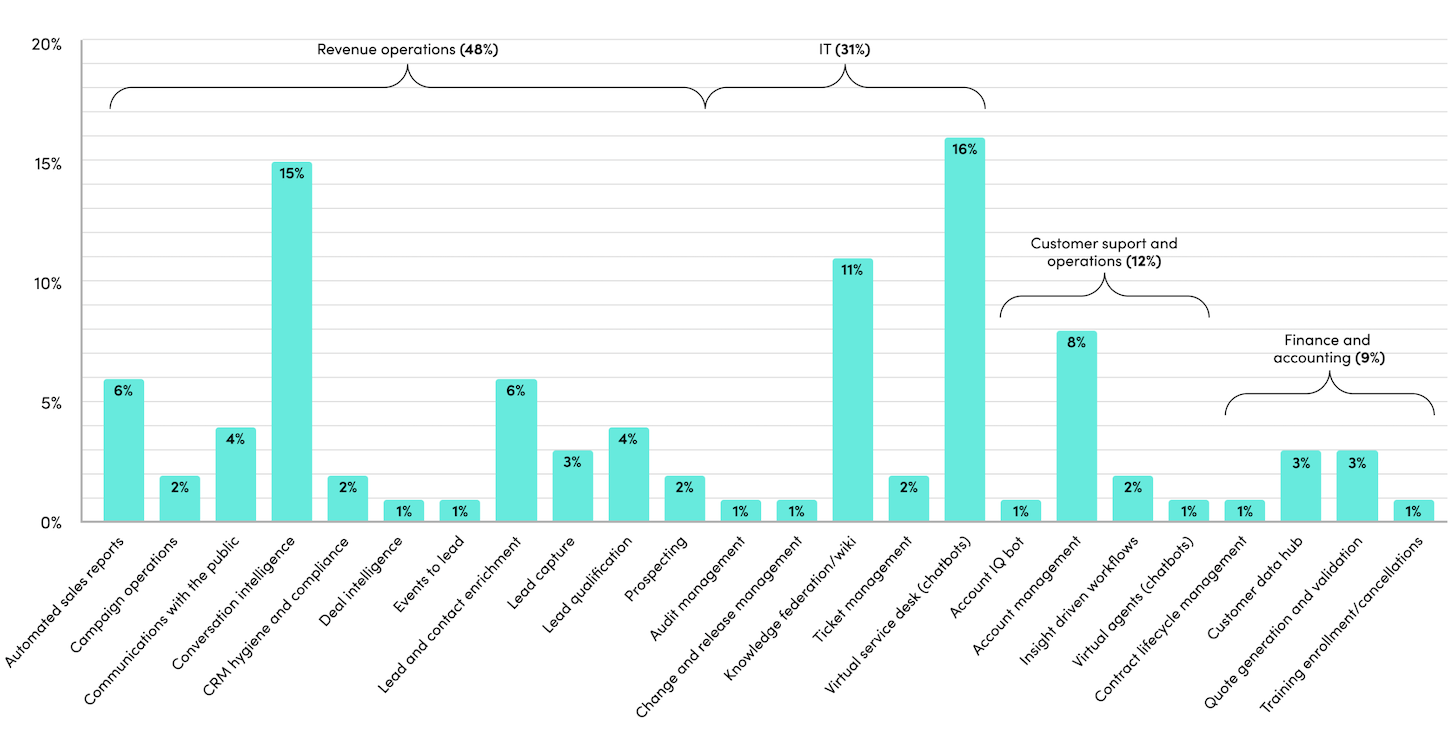
48% of the use cases are in revenue operations, with an additional 12% in customer support and operations. The most common of those use cases is with conversation intelligence — summaries, sentiments, next steps. These have been some of the most time-consuming and error-prone manual facets of managing the customer journey. Intelligent automation here is clearly a huge win for both companies and their customers.
So let’s circle back to where we began, with Publicis’ bold aspiration.
The facts are that businesses are rapidly increasing the scale and complexity of their digital operations. They’re empowering more and more people outside of IT to shape and adapt pieces of those digital operations that are closest to their work. The Workato report didn’t cover the democratization of analytics directly, but a significant number of their use cases involve intelligently distributing data to enable more context-specific analytics. That might not make every employee a data analyst, but it’s sure going to enable a lot more people to productively use self-service analytics in their jobs.
Admittedly, Martec’s Law still holds: there’s going to be a ton of difficult organizational change required to harness the innovation this technology now makes possible. But that’s why this is such an amazing time to be working in martech and marketing operations.
